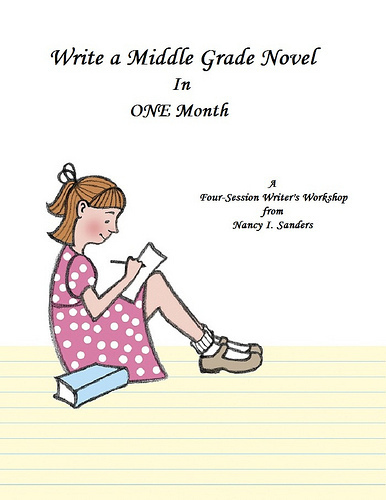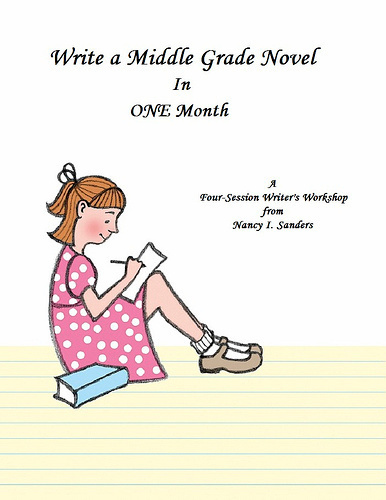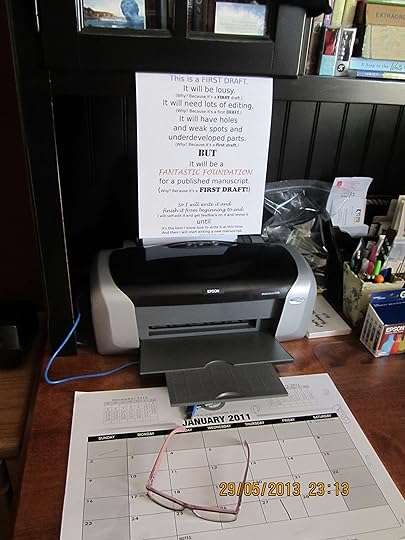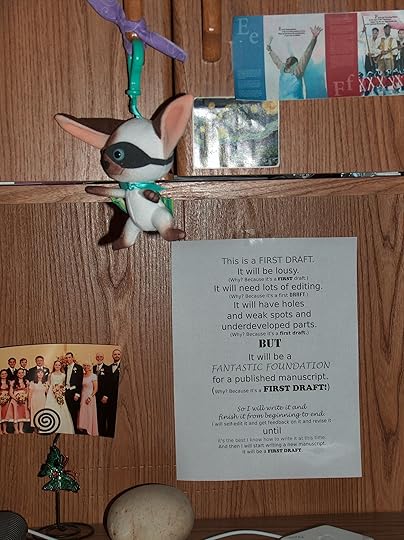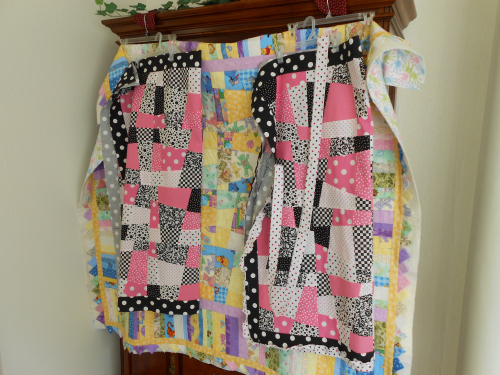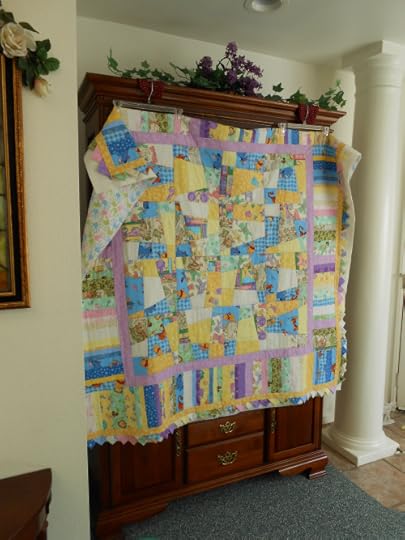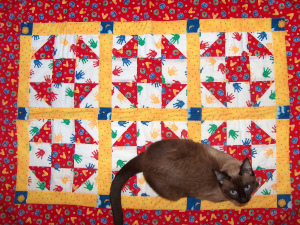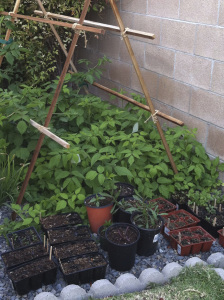Nancy I. Sanders's Blog, page 74
June 14, 2013
Summer Writing Opportunity
Summer days are here. The mockingbirds have a nest in our apricot tree. Our Oriental poppy is blooming with each brilliant orange blossom measuring a stunning 4-6-inches across!
I know many of you are always looking for a new writing project. Here’s a great summer writing opportunity!
It’s one I just heard about.
It’s for writing an article for the The Old Schoolhouse magazine.
This is a great magazine, especially for homeschooling families. It’s got quite an amazing reputation, too, as one of the best!
AND HERE’S A SPECIAL NOTE:
You may wonder why I’d suggest YOU write for this magazine.
It’s because if you write children’s books, this is a FANTASTIC opportunity to market your books and build name recognition in the homeschooling market because this magazine is a mega-site/product that many many homeschooling families read and trust. You can write an article on your book’s topic and talk about how homeschoolers can dig into this topic and then include your book’s title and a link to your webpage in the byline with your name at the end.
Plus: they’ll pay $40 for an article in their magazine.
It’s like getting the word out about your book to a huge number of potential buyers, plus getting paid a little bit for your time. (It’s better than spending your morning at a local book signing!)
For more information about what they’re looking for, check out this link:
And if you have a children’s book that might be of interest to homeschooling families, they also post book reviews! Here’s the link to their contact form:
Check this out this summer! You’ll be glad you did.


June 13, 2013
Write a MG Novel in One Month Workshop
WRITE A MIDDLE GRADE NOVEL IN ONE MONTH
Another thing I wanted to let you know about the workshop of mine that you can purchase is this:
Boy, am I glad I tried to write my novel all in one month.
And boy, am I glad I developed this workshop to write a novel in just one month.
Why?
Because as I’m getting ready to start my third children’s novel under contract (there are 15 chapters and 10,000 words in these books) I’m getting ready to…guess what?
Yep. Write it in just one month!
Because it turns out that this seems to be a very common schedule publishers work with on this type of book.
10,000 words in one month.
I had never done this until I worked my way through this 4-session workshop.
But now I do it all the time.
And if you want to learn how to write these puppies and write them on a schedule that some publishers seem to follow in this industry, go for the gold! And write your children’s novel in just one month, too.
And then write your next.
And your next.
You just may discover you like it.
And who knows where it will go from there!


June 10, 2013
Write a MG Novel in One Month Workshop
Wanna hear an amazing story?
Two years ago I read a couple of middle grade novels:
The Whipping Boy
Crispin: The Cross of Lead
I read those books just for pleasure, but as I read them, I got really really excited. Why? Because I realized I had just read a couple of winners! I knew they were winners, not just because both of them won the top award a middle grade novel can win (The Newbury Award) but I also knew they were winners because I could see past the storyline and understand clearly the techniques the authors used to write these books.
Lightbulbs went off in my head and I got it…I really got it! I was able to identify clear strategies and techniques each of these authors had used to create award-winning middle grade novels.
I was so excited with this, that I decided to offer a 4-session workshop in my home to learn how to write a middle grade novel in one month using the same techniques these authors did to write theirs. I planned on writing a middle grade novel, too, at the same time.
So I did. A bunch of ladies gathered at my house and we worked our way through the workshop over the next 4 weeks.
The result? I wrote a middle grade novel. (So did many of them.)
That middle grade novel was just for fun. To get my feet wet. I self-published it, too! Just for fun. Mystery on Warrior Ridge takes place on the family farm where I grew up.
After that one month workshop was over, I decided to try it again…write a brand new middle grade novel in one month. This time I studied the market more carefully and tried to write a timely novel that could fit into today’s market.
And then I took a daring step. I submitted it to my agent.
And my agent accepted it and started sending it on its rounds. Yay!
Then I started my next middle grade novel in a month. (Okay, I admit it…I was hooked!)
But somewhere in there, I had an opportunity to try out for a chance to write an early chapter book (which is a young middle grade novel). So I followed all those strategies I’d developed during this workshop…and landed the contract to write books in that series!
My first published novels/chapter books for kids. Yay!!!!
So why am I telling you all this?
Because after I held that workshop in my home, I recorded a 4-session audio workshop complete with 25 handouts and it’s now offered for sale at the Working Writer’s Club. It’s real strategies I use to write my novels for kids. It’s real handouts I use to brainstorm and develop story content and track my progress as I write.
And YOU can purchase this workshop and follow the same strategies that have helped me gain publication in this market so that YOU can move forward in your writing career, too! Here’s the link:
HOW TO WRITE A MIDDLE GRADE NOVEL IN ONE MONTH


June 6, 2013
Write a MG Novel in One Month Writer’s Workshop
Yay!!! At long last it’s here!!! The workshop many of you have been asking for!
HOW TO WRITE A MIDDLE GRADE NOVEL IN ONE MONTH
It’s available to purchase at the Working Writer’s Club, and anyone can order it.
So hop on over and learn all about it and how to get it.
And while you’re there, you can also sign up to join the Working Writers Club…membership is FREE! If you do, you’ll get access to lots of great free stuff to help you jumpstart your writing career to the next level. So check it out!


June 3, 2013
The First Draft Show and Tell
Thanks to my wonderful friend, Val, for sending me some pics of your pretty writing center with the First Draft sign hanging front and center, lol!!! I LOVE, LOVE, LOVE your pretty chair cover!!!!
That got me inspired to take pictures of my own writing center, too, with my sign, so here they are:
(Oh, and if you didn’t know it, that’s Skippyjon Jones hanging up there on my desk, too. Thanks again, Val, for such a fun birthday gift!!!! It’s awesome. And in case any of you haven’t yet heard of that picture book character, check him out. Kids LOVE him!)
And if any of you want to take photos of your own writing center complete with added FIRST PAGE sign, e-mail them to me at jeffandnancys@gmail.com and I’ll post them on my blog, too!


May 30, 2013
The First Draft
Yesterday I was working on a new concept I had for a brand new picture book. I was sitting outside on our back patio having lunch. I sat there and stared at the paper.
I’d think of one way to say it. Then I’d think of another way to say it. And so on and so on until after 20 minutes or so I still didn’t have a single word written down on my paper.
Why?
Because I couldn’t think of the PERFECT thing to say.
Suddenly, it dawned on me…THIS IS SILLY!!!!!
I was working on a first draft. But my perfectionista brain was fighting to take control. Yikes!
So I went into my office and made myself a sign. I printed out this sign and now have it posted on my desk where I can be sure to read it and remind myself that a first draft will NOT be perfect.
So if you struggle with getting anything down because it’s just not PERFECT, then print out this sign and hang it next to where you write.
And write that first draft!
Because after you do, you’ll have a fabulous foundation to build upon as you construct your manuscript.


May 28, 2013
Writer’s Block
Some people argue that nobody should get writer’s block. Other people say they’ve got writer’s block and don’t know what to do.
Well, I don’t know all the ups and downs of these conversations on writer’s block, but I do know one thing. As a writer I get stuck sometimes.
It’s like quilting. Here in this photo you can see three quilts. One quilt is in the background and 2 matching ones are hanging in the front. (I have to hang up my quilts as I’m working on them. Otherwise my 2 cats take possession of them and snuggle in them and leave deposits of cat hair all over them!)
Why am I working on 3 quilts at once?
Because I got stuck.
I was working on the quilt in the back, the big one I was talking about in my last post. When suddenly, I got stuck. I wanted to quilt the top with a stipple design, but I practiced it several times and it wasn’t working. I watched a bunch of youtube videos on stipple quilting, but when I practiced on my own, it still didn’t work. So I’m going to ask a quilting friend who knows how to stipple how to do it.
But I won’t see her for another month.
So in the meantime, I started 2 matching quilts. One to give to my niece and nephew for their first baby and one to keep for my future grandbabies.
I do the same thing when I have writer’s block (or whatever you want to call it). When I get stuck on one project, I set it aside for a day or a week or even a month. Then, while I study or learn a technique I need to use at that next spot in my manuscript or try to think of ideas to move forward, I work on another project.
I don’t just quit and give up. I set it aside with full intent of coming back and finishing it later when I’ve had time to address the issue that has given me trouble.
And in the meantime, I work on other projects to keep moving forward.
So many writers I run into just give up on writing altogether when they encounter writer’s block. They don’t write for months or even years. Don’t be like them. If you encounter writer’s block while you’re working on your novel, set it aside for awhile and take time to learn the techniques you need to get back to it.
In the meantime, start a new picture book or a nonfiction magazine article. Keep writing! Keep moving forward and be productive even if you’re stuck in one area.
Then, when you’ve finished that other project, chances are that you’ll be able to come back to your first project refreshed and ready to tackle it once again!


May 24, 2013
Formula Writing
I’ve been quilting now for over 10 years. At first, I took a couple of quilting classes. Step by step, an instructor showed me how to make each different quilt. I started small with a wall hanging of 3 patches. Then I made a tabletop quilt of only 4 patches.
After that, I made baby quilts.
After making several quilts at classes, I decided to try to make one at home without a teacher. I got stuck a couple of times, but I had some quilting friends so asked them for advice. It was a success!
From then on, I made quilts at home. I always used patterns and followed the instructions carefully.
The quilt in this picture here is a quilt that for the first time ever, I’m creating without a pattern.
I used the Crazy Nine Patch pattern in the center. But around the center I added strips I sewed together. And then around the whole edge of the quilt, I sewed on Prairie Points as the edging. I even created a fun design on the back (which you can’t see in this picture).
Writing is like quilting. When you’re starting out, it may feel like you’re using a formula. Put plots points in chapter 5, 10, and 15. Write scenes that start with dialogue and end with a cliffhanger. Interview our character and find out what her favorite colors and favorite desserts are.
Formula writing is okay. You have to start somewhere.
I’ve sat in conferences and read writing posts that tell you not to use formulaic writing. But for beginning writers or learning how to write in a genre that’s new for you, I think it’s good to learn how to write using a successful formula that has worked for others.
Then, gradually, as the formula becomes part of you, it becomes more intuitive. You can step away from the formula and use a more organic approach because you’ve LEARNED the basics about plot or setting or dialogue or character development.
The key is to just keep writing manuscript after manuscript after manuscript, improving your skills more each time and learning more about the formulas found in writing until your work improves and you grow as a writer.
I started out writing using various formulas. And I got published, too. Many smaller presses are okay working with beginning writers.
I still like to use formulaic writing today as I’m experimenting with a genre that’s new to me or trying to improve my craft in a certain area. But as I write manuscript after manuscript using a particular formula, the formula starts to fade into the background and a unique voice emerge in my stories.
So now, I’m starting to connect with the bigger publishers. It’s an exciting place to be. And it all started out following formulas.


May 21, 2013
Try New Genres
I like to quilt. Over the years, I’ve made 20 or more quilts.
For awhile, this quilt pattern was my favorite. I made lots of quilts with this pattern. I think it’s called the Shoo-Fly Quilt.
After some time, though, I felt like trying a new pattern. I made a log cabin quilt. I didn’t really like it that much. It was hard for me to get the patches even and straight. And I realized I liked patterns with triangles more than rectangles or squares.
So then I tried making a Crazy Nine Patch quilt. I really like it! I’m working on my 4th one now!
Writing for children is like quilting. It’s okay to try out different genre and writing for different markets. You might discover you don’t write very well in one genre. That’s okay. Try a different one.
You might find you like writing in a certain genre and stay there for awhile. That’s great! Write to your heart’s content, learning all the tricks and techniques as you pump out manuscript after manuscript in that genre.
But then if you feel like moving on and trying something new, go ahead! Even if you’re not very good at it at first, if you like it, try writing another manuscript and then another. You might find a genre that’s a good fit, after all.


May 9, 2013
Writing Tips from the Garden: Spring Has Sprouted!
Spring has sprouted in my garden. Tiny seedlings are popping up in the seed packs I’ve planted. The raspberry bushes have sprouted. Things are sprouting everywhere! (See the photo above.)
It’s so exciting to see—especially one of my favorite flowers, red amaranth. There’s a carpet of one-inch seedlings near my garden path where I enjoyed the brilliant red flowers last year, all summer long.
But there’s one problem. There are too many seedlings. I only want 12 plants, but over 100 seedlings have sprouted. The seed packet says to thin them three inches apart…but which ones do I pull? They all look the same.
But pull them I must if I want my flower garden to look pretty and not like a neglected weed patch.
Now, I can just pull them and throw the extras away. Or I can do something with them. So I dig them up carefully and replant them in empty 6-pack containers and give them to friends. A dreary task of “weeding” now turns into a joy.
Writing is like that. As children’s writers, so often we have tight word counts. Fiction picture books top out at 800 words these days. The historical fiction I recently got accepted at a children’s magazine had to be 400 words. And when I wrote my nonfiction books for students 9 years and older, they had to be about 41,000 words.
The problem is, when I finish the first draft of a story, I’m usually way over my word count. There’s so much I want to say! For example, my historical fiction for the children’s magazine started out at nearly 1,000 words. And when I wrote my two nonfiction children’s books, America’s Black Founders and Frederick Douglass for Kids, I was thousands and thousands of words over my word count.
Just like the seedlings in my garden, I had to get rid of the extra words. Even though all the words and all the sections seemed important to me. And just like the seedlings, I could either delete the extra words and throw them away, or I could do something with them.
So I decided to do something with them. I cut whole sections out of my nonfiction books and entire “scenes” I’d created and did something with them. I used them as content for the websites I was building to help market each book. (To see what I did visit my sites America’s Black Founders and Frederick Douglass for Kids.)
This turned a potentially difficult and unwelcome task into an exciting and meaningful activity. I now had purpose for each word I deleted as it found its way in some shape or form into the websites I was creating.
So next time you have to cut and trim the article or book you’re writing after you finish your first draft, don’t despair! Decide on a purpose for the words, scenes, and entire sections you need to cut to meet your publisher’s word count. Then chop, snip, and trim away. You’ll soon reap the benefits. Just as a gardener enjoys her flower garden!


Nancy I. Sanders's Blog
- Nancy I. Sanders's profile
- 76 followers



